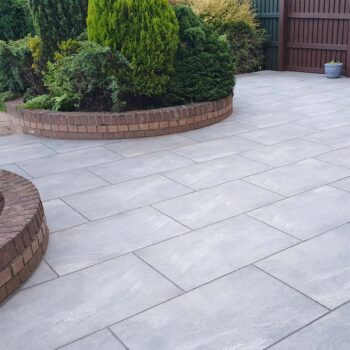Silicone sealant doesn’t last forever and, every couple of years may need replacing to keep it looking fresh – more so in the kitchen and bathroom than anywhere else in the home. It sounds daunting, however, removing and replacing silicone sealant is a doddle and can be done well in just a couple of hours on a Sunday afternoon.
What you will need:
- Gloves
- Stanley Knife or Chisel
- White Spirit
- Old Cloth
- Silicone Sealant
- Mastic Gun
Should I apply new silicone sealant over an old sealant?
Never apply new silicone sealant over old sealant as, in most cases, the old sealant would have fallen away or split meaning that, no matter how much new sealant you apply, the leak will persist. Not to mention, applying a new sealant over old will look incredibly messy and unappealing.
Tip: If your silicone sealant has split, consider adjusting the position of your shower or bath for a snug fit, preventing any movement.
How to Remove Silicone Sealant
This is the fun part! Sort of… But before you begin, make sure you’re wearing old clothing and the necessary safety gear such as gloves.
Using a sharp tool – ideally a Stanley knife or chisel – cut the old sealant away, being cautious not to damage the surface that you’re removing the sealant from. Continue until you’ve removed as much of the old sealant as you possibly can.
Once most of the old sealant has been removed, you’ll need to tackle the small, fiddly strands that are leftover before applying a new layer of silicone sealant to the area. Initially, try pulling away the leftover sealant with your hands. If this fails, dab the leftover strands with white spirit until they come away or dissolve.
How to Replace Old Silicone Sealant
The area you’d like to apply new silicone sealant to should be completely clear by now. If that’s the case, you’re ready to apply new sealant!
Take a new tube of silicone sealant and insert it into the mastic gun, or a skeleton gun, before cutting the top of the tube off (only cut around 1cm from the end of the tube to ensure that you don’t get too much sealant when you press down – think of it as if you were icing a cake using a piping bag!).
You’re ready to re-seal!
Angle the tube lengthways along the joint and squeeze the trigger down, moving along the joint to leave a clean trail of sealant. Repeat this step until you reach the end of the joint or area you’re sealing. Once you’ve done that, neaten up the joint by running a wet finger over the silicone slowly, pushing the new sealant into the gaps as you go. Have extra water to hand to re-wet your finger if necessary as if you try this with a dry finger, you will create a mess and have sealant stuck to your hands.
Is that it?
Yes, that’s all there is to it! If there is any residue, wipe it off once you have finished sealing the area to ensure it doesn’t stain. Lastly, once the sealant is dry, use a Stanley knife to trim any rough edges for a perfect, clean-cut finish.












